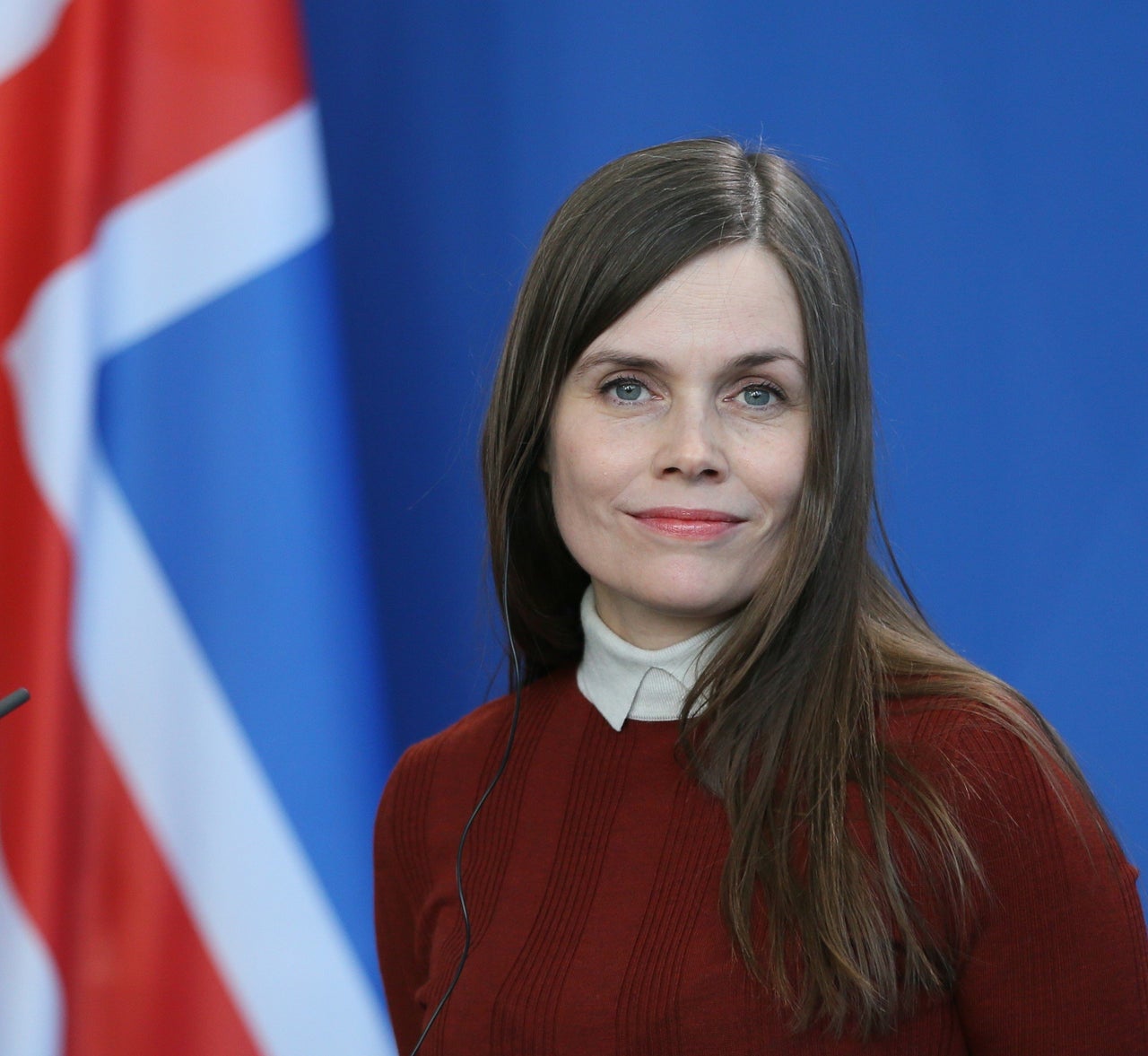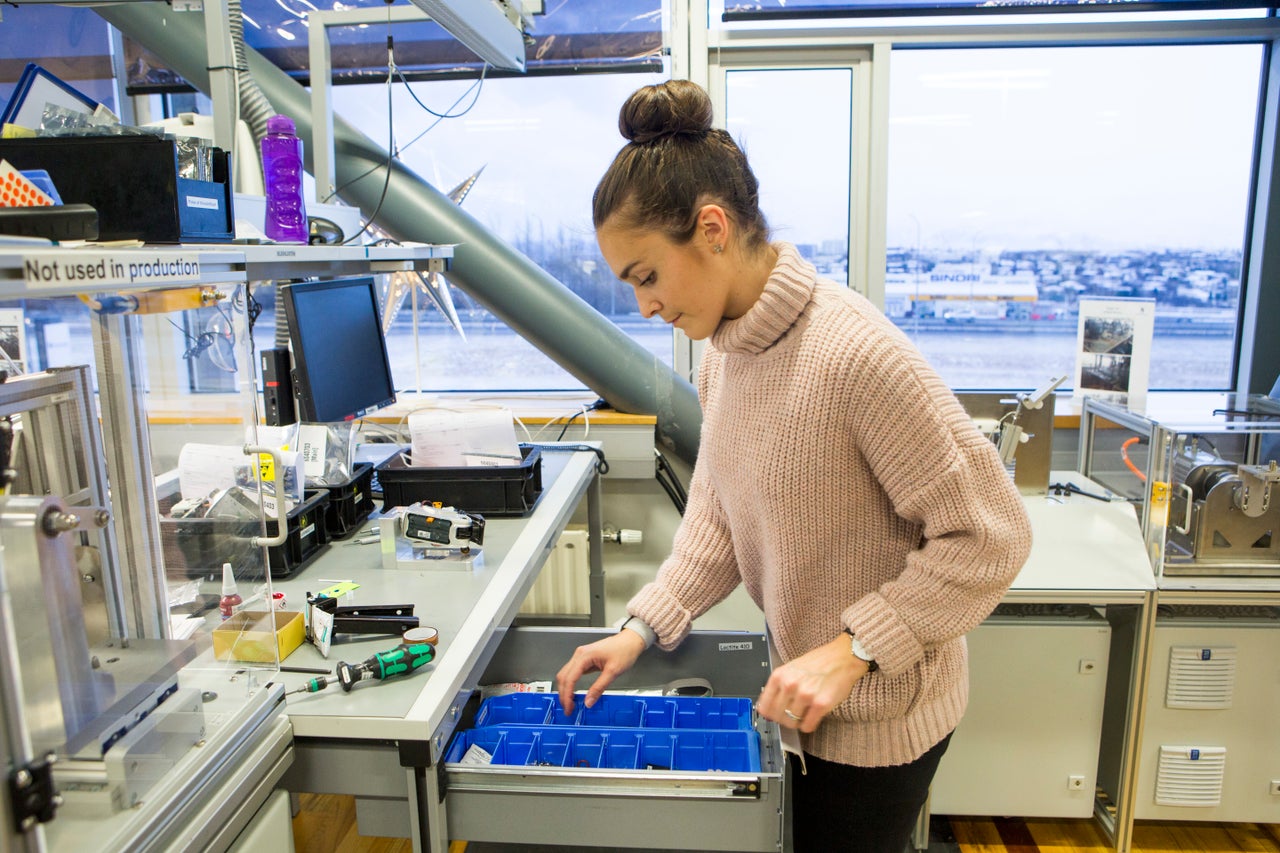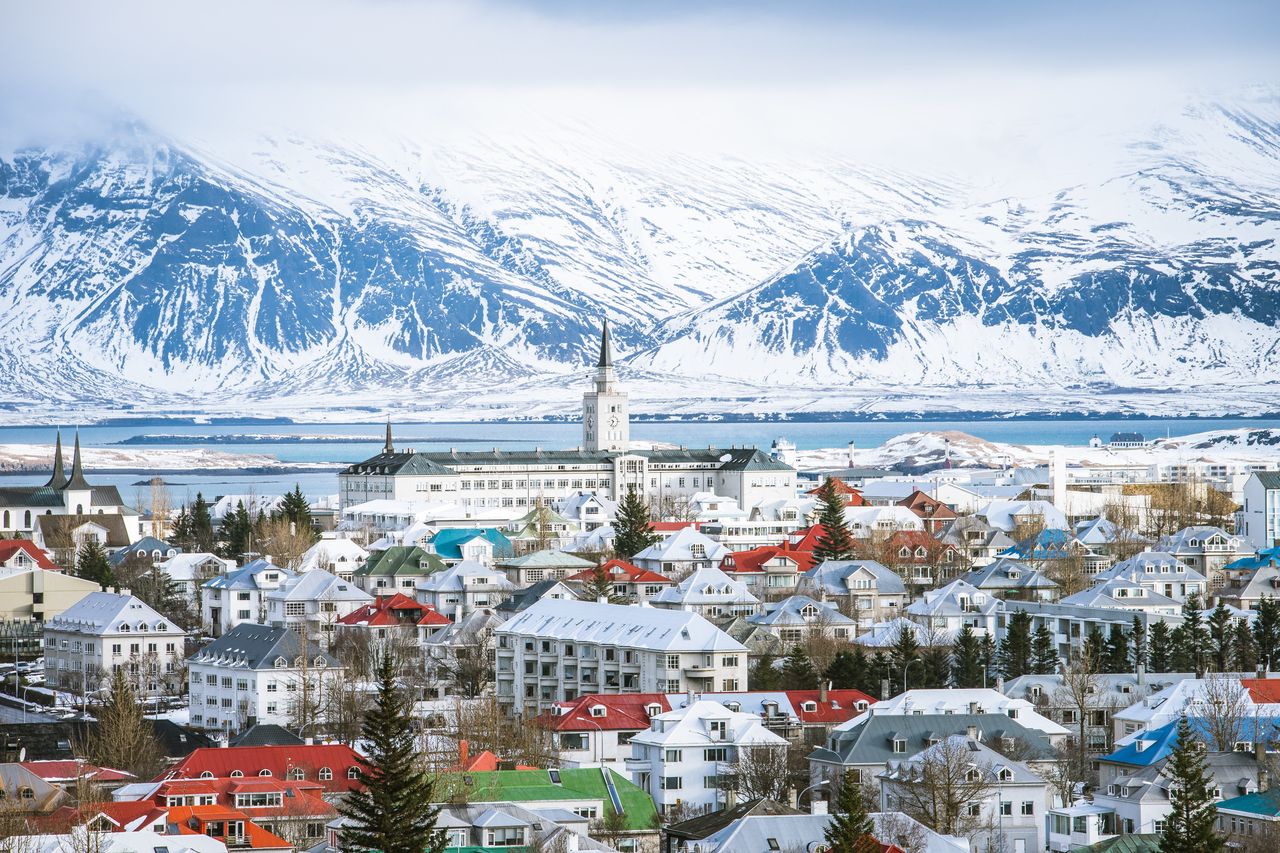What Women Want Now is a program by HuffPost and her sister sites dedicated to creating content about the issues and stories that matter most to women. Read more here. Join the conversation with #WhatWomenWantNow.
***
Iceland is often celebrated for its geothermal pools, breathtaking glaciers and amazing views of the northern lights. But it has another claim to fame: It is apparently the best place in the world to be a woman.
For the last decade, the nation of roughly 350,000 people has topped the World Economic Forum’s annual gender gap report, which ranks countries’ progress toward gender equality across areas including economic participation, political representation, education and health. For comparison, the United States came in 51st last year, sandwiched between Mexico and Peru. Iceland also consistently performs well in The Economist’s “glass ceiling index,” which rates the best countries for working women. It placed first in the index in 2016 and third in 2018 (the U.S. came in 19th).
The Nordic nation’s progressive attitudes toward women have given it much to boast about. It was the first country to democratically elect a female president, Vigdís Finnbogadóttir, who came to power in 1980. The current prime minister, Katrín Jakobsdóttir, who was elected in 2017, is the second woman in that position in Iceland’s history. Iceland has also passed a raft of legislation aimed at reducing pay inequality, ensuring women are better represented at the highest levels in business and guaranteeing shared paid parental leave.
Yet while it forges ahead of the rest of the world, some leaders in Iceland’s push for gender equality point out that their country is still no paradise for women and argue that all the accolades show how low the global bar is for women’s rights.

Much of the progress that Iceland has made can be credited to a strong women’s movement, which has propelled the demand for gender equality into the mainstream in a nation where ideas of male dominance and set gender roles have deep roots. “Grassroots activism is absolutely key. Nothing would happen without grassroots activism,” said Brynhildur Heidar- og Ómarsdóttir, managing director of the Icelandic Women’s Rights Association.
Perhaps the greatest demonstration of this came in 1975, when Icelandic women took to the streets, angry at not being paid enough for their work ― both in and outside the home ― and frustrated at the dearth of political representation.
“We needed to do something big and we needed to do something bold because our situation was dire,” said Ómarsdóttir, who credits the international women’s movement, including the women who marched for equality in New York City in 1970, for inspiring Icelandic women.
A staggering 90 percent of Iceland’s female population turned out for the 1975 protest. Instead of calling it a strike, which might have alienated the country’s more conservative women (“because to go on a strike was a very leftie thing to do,” said Ómarsdóttir), the day was called Kvennafrídagurinn, meaning “women’s day off,” a concept all women could get behind.
“That solidarity was absolutely fundamental in creating a tradition in Iceland of all women, no matter their political persuasion, coming together,” said Ómarsdóttir.
From there Iceland has seen waves of change. A Gender Equality Act was signed in 1976 and, following Finnbogadóttir’s election as president, the Women’s Alliance was launched with the aim of propelling more women into politics and won its first parliamentary seats in 1983.
Today Iceland has one of the best records in the world for female political representation. At its peak in 2016, nearly 48 percent of the elected members of Iceland’s Parliament were women. That figure now sits at around 38 percent, but it’s still far above countries like the U.S. where women make up 23.7 percent of Congress.
When it comes to equality in the workplace, Iceland has not been afraid to legislate progress ― something many other countries have shied away from, preferring softer voluntary approaches to reducing gender inequality. Despite the initial pushback from business, Iceland implemented mandatory gender quotas for company boards. Women must make up at least 40 percent of board members. And that law has worked. Today women constitute 43 percent of the boards of the largest publicly listed companies (that figure is 21.7 percent in the U.S.).
“The last thing that we wanted to do was put quotas out there,” said Bergljót Thrastardóttir of the Icelandic government’s Equality Directorate, “but we had to because we had been talking to the businesses for a long time and nothing was happening.”
Though women now have seats at the corporate decision-making table, there is still some way to go. The hope that the quotas would lead to more women becoming CEOs hasn’t been realized yet, said Thrastardóttir.
Iceland is also the only country in the world to require companies to prove that they are not paying women less than men, through a landmark equal pay law that went into effect in 2018. While paying women and men differently for the same work is technically illegal in multiple countries, many companies flout those laws without consequence. Iceland has a gender pay gap of around 16 percent (it’s around 20 percent in the U.S.), according to figures from the Prime Minister’s Office.
“What has always been the problem with equal pay legislation is the fact that it put it on the employee to actually prove discrimination,” said Ómarsdóttir. That means scraping together the financial and mental resources to put up a legal fight. And even if the employee gets justice for herself, it may not help her co-workers.
Iceland’s legislation shifts that burden onto companies to demonstrate they are not discriminating against women. Any company with 25 or more employees will have salaries independently audited every three years. Those who fail the audit will face fines and open themselves up to being publicly shamed.

Iceland has been looking to bring equality into domestic life, too, by providing subsidized childcare and encouraging shared parental leave.
Since 2000, parents have been entitled to nine months’ shared leave paid at 80 percent of their average salaries (up to a set amount). Mothers get three months and fathers get three months, and the remaining three months can be shared between the two. A bill currently making its way through Parliament could extend that leave further, giving men and women five months each with two months to share.
The policy has had a huge impact. Around 90 percent of fathers in Iceland take parental leave. “Research shows that the connection children have with their fathers in Iceland is among the best,” said Thrastardóttir. Meanwhile, women have been able to work longer hours and enter higher-paying jobs while facing less discrimination from employers, according to one study of the law’s impact.
“Many female politicians in Iceland would never have got where we are today if it wasn’t for childcare and parental leave,” Prime Minister Jakobsdóttir wrote on the World Economic Forum’s website last year. “I am an excellent example of that.”
Iceland’s advances in gender equality show the power of grassroots activism to push for better representation and the impact of legislation to ensure commitments are met. But they’re also reflective of the country’s very particular political and social culture. It’s part of and competitive within the Nordic block of countries, which are all very committed to gender equality.
It’s also a tiny society. “It really only takes one person with a great idea and society is changed in a decade,” said Ómarsdóttir, pointing to the example of a high school teacher in Reykjavik, the nation’s capital, who started to offer gender studies as an elective.
“It worked really well,” Ómarsdóttir said. “Her students came out motivated. They really had their eyes open, their blinkers removed.”
The teacher began training other teachers across Iceland. Just over a decade later, gender studies courses are being offered in around half of high schools and are mandatory for students in three high schools (which may not sound much, but that’s nearly 10 percent of all Icelandic high schools).
Of course, Iceland is far from perfect. “Basically, this impression of Iceland being the best in the world says more about how bad things are in the rest of the world than about how good things are here in Iceland,” said Ómarsdóttir. Thrastardóttir agreed: “We are not the gender paradise that everybody is talking about.”
Violence and sexual harassment against women ― a factor not measured in the World Economic Forum’s gender gap report ― is still a big problem. A closed Facebook group, titled “Beauty Tips,” was set up in 2014 and swiftly became a forum for members to swap their experiences of rape and harassment. It has around 30,000 members, roughly 20 percent of the country’s women.

A recent scandal also highlighted how far there is to go in ridding Iceland of entrenched gender stereotypes. In late November, a group of politicians ― including former Prime Minister Sigmundur Davíd Gunnlaugsson ― were recorded in a bar spewing misogynistic rhetoric and criticizing the Me Too movement. Gunnlaugsson had previously styled himself as a champion of women’s rights and even been voted one of the world’s top feminist men.
The incident dubbed Klausturfokk (after Klaustur, the bar in which it took place) reveals something important about Icelandic society, said Janet Johnson, a political science professor at Brooklyn College.
“On the surface, there’s a lot of great stuff and there’s a very strong women’s movement and the feminists in Iceland have worked really hard,” Johnson said, but she added, “On the other hand, the way I see it, it’s a kind of bait and switch.” She said formal achievements are undermined by informal political networks, which are still dominated by men ― men who went to the same schools and meet in bars and backyards to make decisions.
Hope for attacking these stubborn areas of inequality lies in the generation coming of age now, said Thrastardóttir. “There has been a small revolution here among young people that’s very promising for the future.” She added, “When it comes to gender equality, it’s a slow change but it’s happening. We who work in this sector always want things to go faster and we always have to be on our toes.”
For more content and to be part of the “This New World” community, follow our Facebook page.
HuffPost’s “This New World” series is funded by Partners for a New Economy and the Kendeda Fund. All content is editorially independent, with no influence or input from the foundations. If you have an idea or tip for the editorial series, send an email to thisnewworld@huffpost.com.
